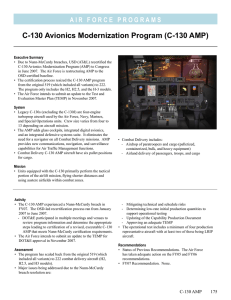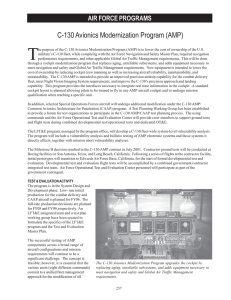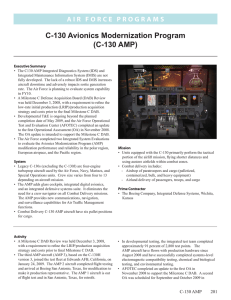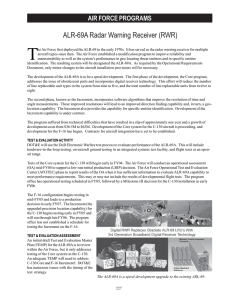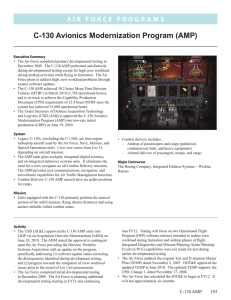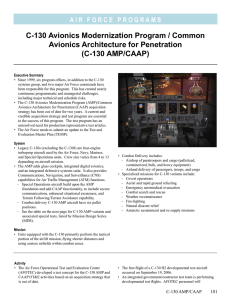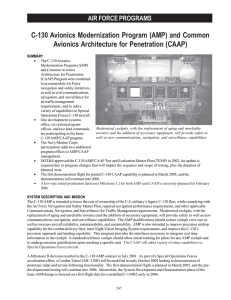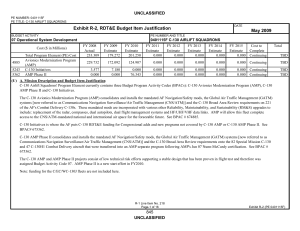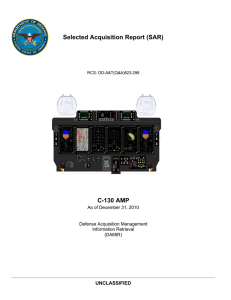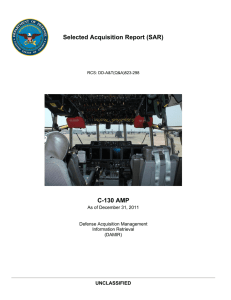C-130 Avionics Modernization Program (C-130 AMP)
advertisement
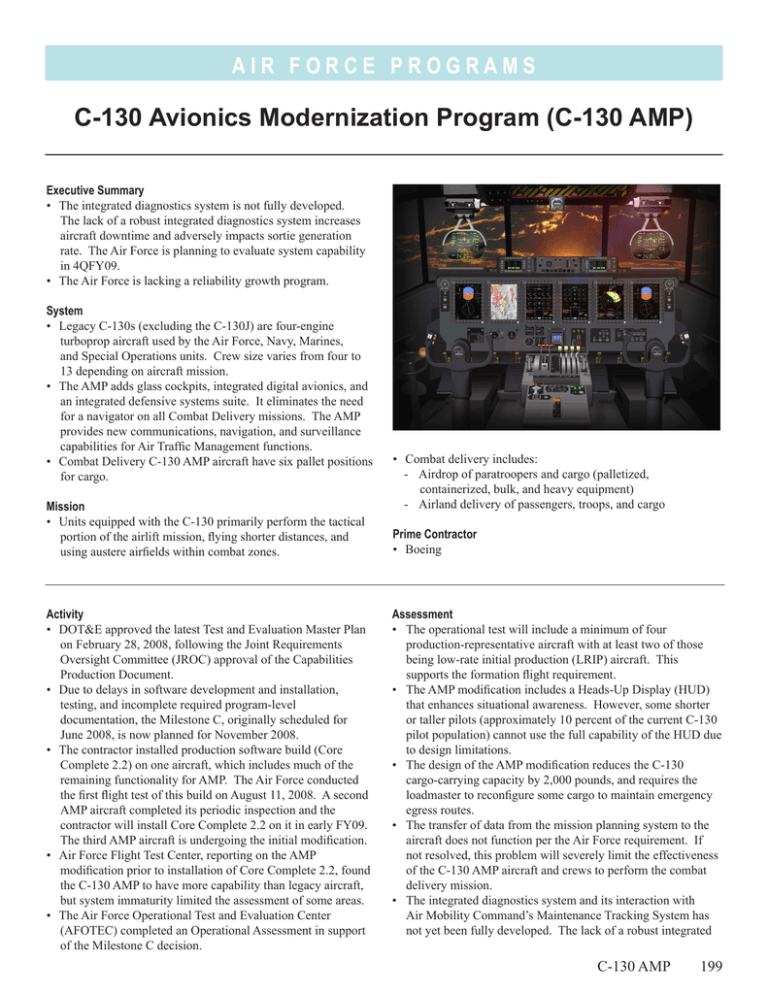
A i r F o r c e P RO G R A M S C-130 Avionics Modernization Program (C-130 AMP) Executive Summary • The integrated diagnostics system is not fully developed. The lack of a robust integrated diagnostics system increases aircraft downtime and adversely impacts sortie generation rate. The Air Force is planning to evaluate system capability in 4QFY09. • The Air Force is lacking a reliability growth program. System • Legacy C-130s (excluding the C-130J) are four-engine turboprop aircraft used by the Air Force, Navy, Marines, and Special Operations units. Crew size varies from four to 13 depending on aircraft mission. • The AMP adds glass cockpits, integrated digital avionics, and an integrated defensive systems suite. It eliminates the need for a navigator on all Combat Delivery missions. The AMP provides new communications, navigation, and surveillance capabilities for Air Traffic Management functions. • Combat Delivery C-130 AMP aircraft have six pallet positions for cargo. Mission • Units equipped with the C-130 primarily perform the tactical portion of the airlift mission, flying shorter distances, and using austere airfields within combat zones. Activity • DOT&E approved the latest Test and Evaluation Master Plan on February 28, 2008, following the Joint Requirements Oversight Committee (JROC) approval of the Capabilities Production Document. • Due to delays in software development and installation, testing, and incomplete required program-level documentation, the Milestone C, originally scheduled for June 2008, is now planned for November 2008. • The contractor installed production software build (Core Complete 2.2) on one aircraft, which includes much of the remaining functionality for AMP. The Air Force conducted the first flight test of this build on August 11, 2008. A second AMP aircraft completed its periodic inspection and the contractor will install Core Complete 2.2 on it in early FY09. The third AMP aircraft is undergoing the initial modification. • Air Force Flight Test Center, reporting on the AMP modification prior to installation of Core Complete 2.2, found the C-130 AMP to have more capability than legacy aircraft, but system immaturity limited the assessment of some areas. • The Air Force Operational Test and Evaluation Center (AFOTEC) completed an Operational Assessment in support of the Milestone C decision. • Combat delivery includes: - Airdrop of paratroopers and cargo (palletized, containerized, bulk, and heavy equipment) - Airland delivery of passengers, troops, and cargo Prime Contractor • Boeing Assessment • The operational test will include a minimum of four production-representative aircraft with at least two of those being low-rate initial production (LRIP) aircraft. This supports the formation flight requirement. • The AMP modification includes a Heads-Up Display (HUD) that enhances situational awareness. However, some shorter or taller pilots (approximately 10 percent of the current C-130 pilot population) cannot use the full capability of the HUD due to design limitations. • The design of the AMP modification reduces the C-130 cargo-carrying capacity by 2,000 pounds, and requires the loadmaster to reconfigure some cargo to maintain emergency egress routes. • The transfer of data from the mission planning system to the aircraft does not function per the Air Force requirement. If not resolved, this problem will severely limit the effectiveness of the C-130 AMP aircraft and crews to perform the combat delivery mission. • The integrated diagnostics system and its interaction with Air Mobility Command’s Maintenance Tracking System has not yet been fully developed. The lack of a robust integrated C-130 AMP 199 A i r F o r c e P RO G R A M S diagnostics system increases aircraft downtime and adversely impacts sortie generation rate. Installation and testing of the system and interfaces are slated to occur in August 2009. • Based on current failure rates and failure corrections planned for Core Complete 2.2, the C-130 AMP will not meet reliability predictions. Recommendations • Status of Previous Recommendations. The Air Force addressed all previous recommendations. 200 C-130 AMP • FY08 Recommendations. The Air Force should: 1. Determine the number of C-130 pilots (active duty, guard, and reserve) unable to use the HUD as a primary flying device and determine if the impact of the current HUD design is acceptable. 2. Develop and implement a reliability growth program. 3. Develop a plan to resolve the integrated diagnostics/maintenance interface tracking system disconnect.
